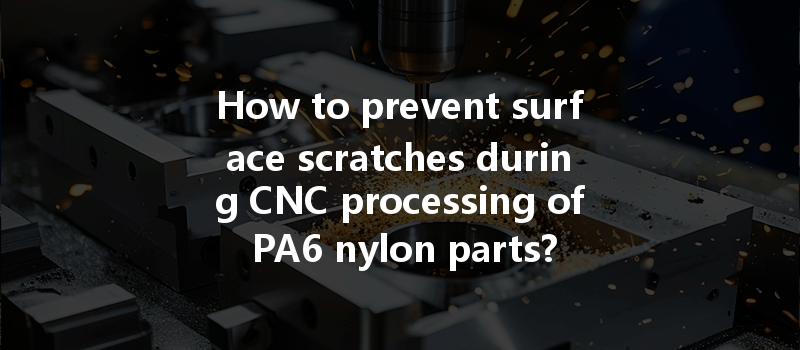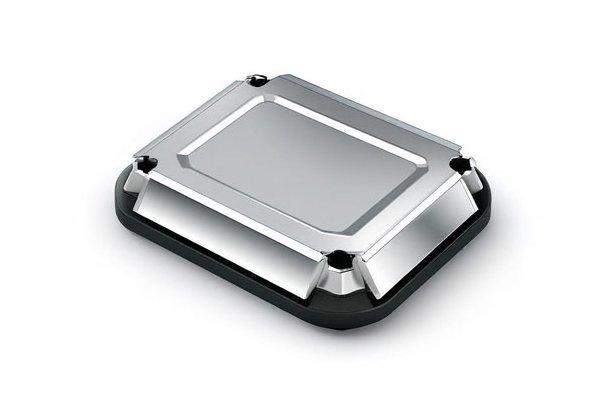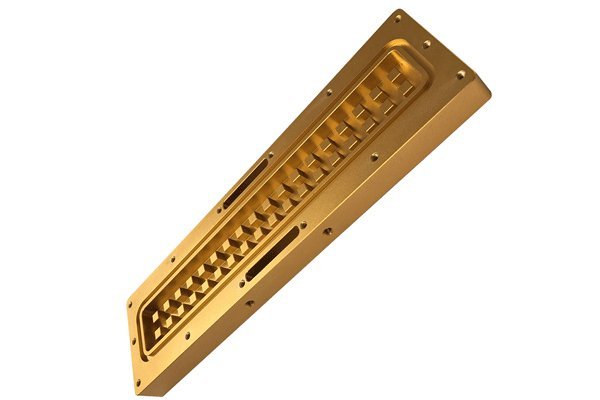Have you ever wondered why surface quality matters so much in CNC processing? Whether you’re in the automotive, aerospace, or consumer goods industry, the surface appearance of your parts can make or break your product. In fact, statistics indicate that over 70% of manufacturing errors arise from surface defects—a significant concern in an era where precision is paramount.
When it comes to CNC (Computer Numerical Control) processing of PA6 nylon parts, surface scratches can be especially problematic. Often used in applications requiring durability, flexibility, and resistance to wear and chemicals, PA6 nylon is a popular choice for engineers. However, ensuring that these parts come out flawless can be a challenge. The good news is that there are several effective strategies to prevent surface scratches, which we will delve into in detail.
Understanding the CAUSES of Surface Scratches in CNC Processing
Before exploring solutions, it’s essential to understand the factors contributing to surface scratches in CNC processing:
The quality and type of tools used in CNC machining significantly influence the outcome. Dull or inappropriate cutting tools can lead to excess friction, resulting in scratches.
Incorrect settings for feed rates and spindle speeds can lead to undue pressure on the material, which can cause scratching.
Different materials have unique properties that affect how they respond to machining. PA6 nylon is relatively soft compared to metals, which makes it more susceptible to scratches.
Improperly secured workpieces can shift during machining, leading to unwanted contact between the tool and the workpiece surface.
Dust, debris, and even humidity levels in the workshop can affect the machining process, leading to surface imperfections.
Detailed Solutions for Preventing Surface Scratches
High-quality Tooling:
Investing in high-quality, specifically designed tooling is the first step toward preventing surface scratches. Choose tools with coatings like TiN, which can provide much better wear resistance.
Tool Geometry:
Different cutting geometries can also help minimize scratches. Use tools designed to create smooth finishes rather than those that leave marks.
Feed Rate and Spindle Speed:
Optimizing the feed rate and spindle speed can lead to smoother cuts. For PA6 nylon, a slower feed rate may reduce the chances of scratches while providing a better finish.
Experimentation:
Conduct tests to find the best combinations of feed rates and spindle speeds for your specific CNC machine and material.
Vices and Clamps:
Utilize appropriate vices and clamps to secure your workpiece. A stable setup prevents movement that can lead to scratches.
Custom Fixtures:
Consider using custom fixtures tailored for PA6 nylon parts. These can provide better support and stability, minimizing the possibility of surface contact.
Tool Path Optimization:

Using software to optimize tool paths can help minimize unnecessary movement and contact with the material, which can lead to scratches.
Minimizing Retract Moves:
Ensure that tool paths are clean, minimizing retract moves that could reposition the tool incorrectly.
Clean Workspace:
Maintain a clean workspace and regular removal of dust and debris. This could mean using air compressors or cleaning agents specifically designed for CNC environments.
Humidity Control:
Consider using dehumidifiers to prevent moisture from affecting nylon samples, as moisture can lead to surface issues.
Lubrication:
Using appropriate cutting fluids can reduce friction and heat, which, in turn, minimizes scratching risks. Always refer to the material data sheets to find compatible lubricants for PA6 nylon.
Coolant Systems:
Invest in CNC machines with effective coolant systems to control the heat generated during machining. This helps maintain appropriate temperatures and minimizes wear on your tools.
Preventative Maintenance:
Regular maintenance of CNC machinery including checking the condition of tools, calibrating machine parameters, and ensuring that all components operate optimally will enhance overall efficiency and surface quality.
Calibration Checks:
Regularly calibrate the machine to ensure that all settings are as specified. This is crucial to avoid variations in cutting depth and pressure that can result in scratches.
The Importance of Quality Control
Additionally, implementing quality control measures ensures that the finished parts meet the required standards before they leave the workshop. This can include various inspection techniques utilizing surfaces roughness measurement devices that ensure that surface finish standards are met.
Testing:
Conduct visual inspections, and if necessary, utilize more advanced testing techniques such as a microscope for detecting scratches that are not visible to the naked eye.
Case Studies: Effective Scratch Prevention
Case Study 1: Automotive Component Manufacturer
An automotive component manufacturer faced challenges with surface scratches on their PA6 nylon parts used in internal engine components. After conducting a thorough investigation, they concluded that their feed rates were too high for the specific tooling used. By adjusting the feed rate and investing in higher quality, coated tooling, they managed to reduce scratches by over 50%.
Case Study 2: Consumer Goods Designer
A designer of consumer goods experienced significant rework costs due to scratches on their nylon products. They implemented custom fixtures to stabilize their parts during machining and optimized their tool paths. As a result, the incidence of scratches dropped dramatically, and they were able to improve production efficiency, leading to reduced costs and enhanced customer satisfaction.
: The Key Takeaways for Scratch-Free CNC Processing
In summary, preventing surface scratches during CNC processing of PA6 nylon parts requires a multifaceted approach. From selecting the right tools and optimizing machining parameters to maintaining a clean workspace and investing in quality control systems, every step plays a crucial role.
Why It Matters:
As industries continue to demand high-quality parts with flawless finishes, understanding the measures necessary to prevent surface scratches is essential for any manufacturer. By implementing the strategies outlined in this blog, businesses can improve product quality, reduce costly rework, and enhance customer satisfaction—factors that ultimately contribute to long-term success.
In the competitive landscape of manufacturing, staying ahead of these challenges will not only benefit your current operations but set a strong precedent for quality and reliability in the future. So take a moment to reflect on how these techniques can be incorporated into your workflow, and invest in the success of your CNC operations today.






